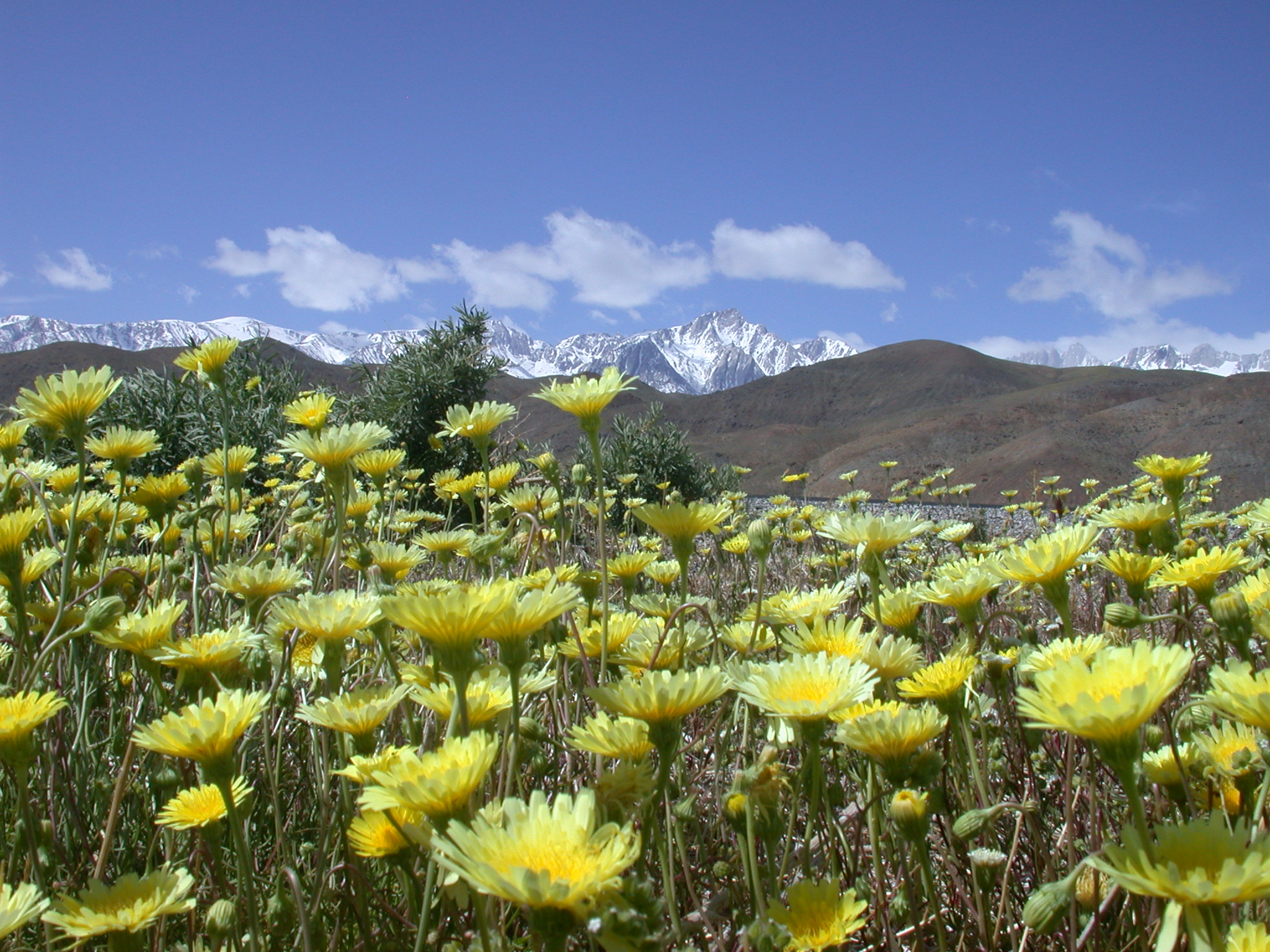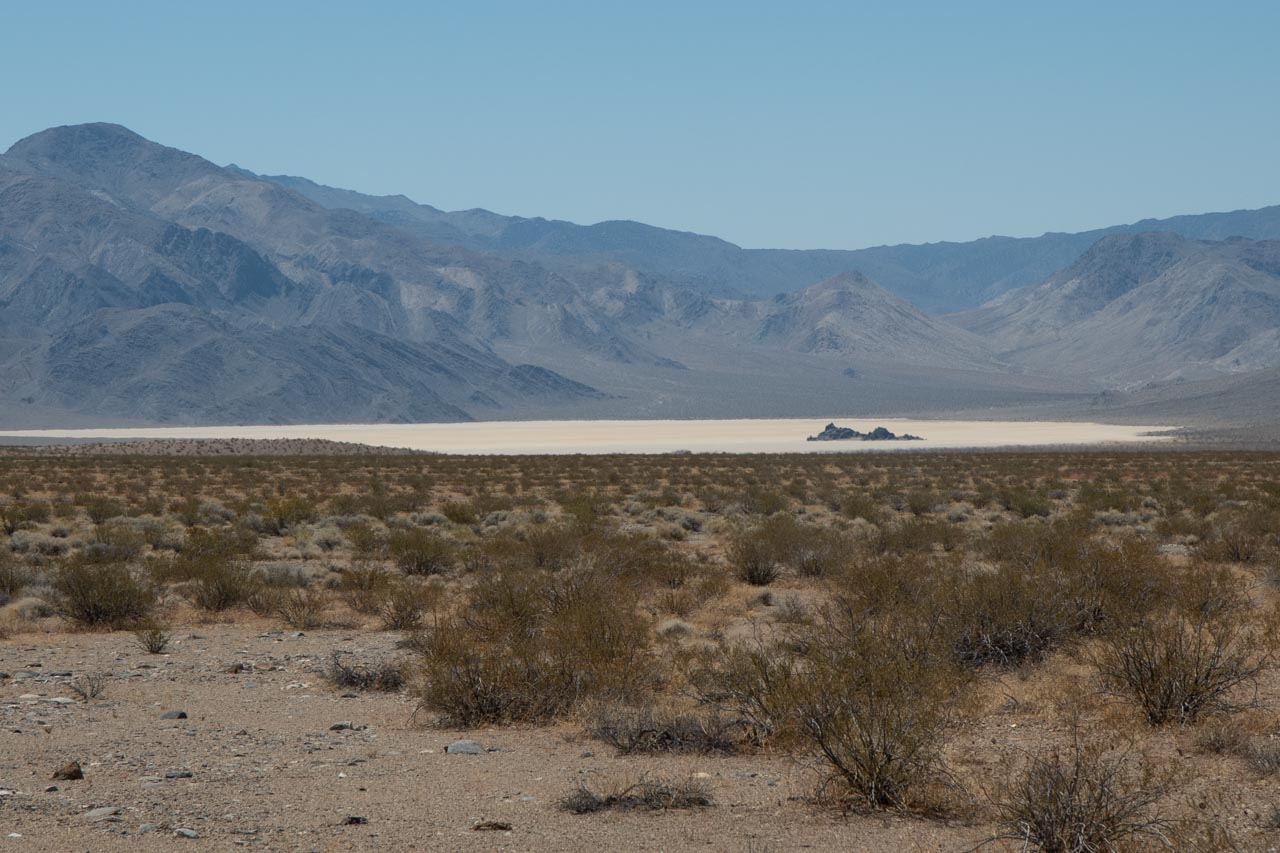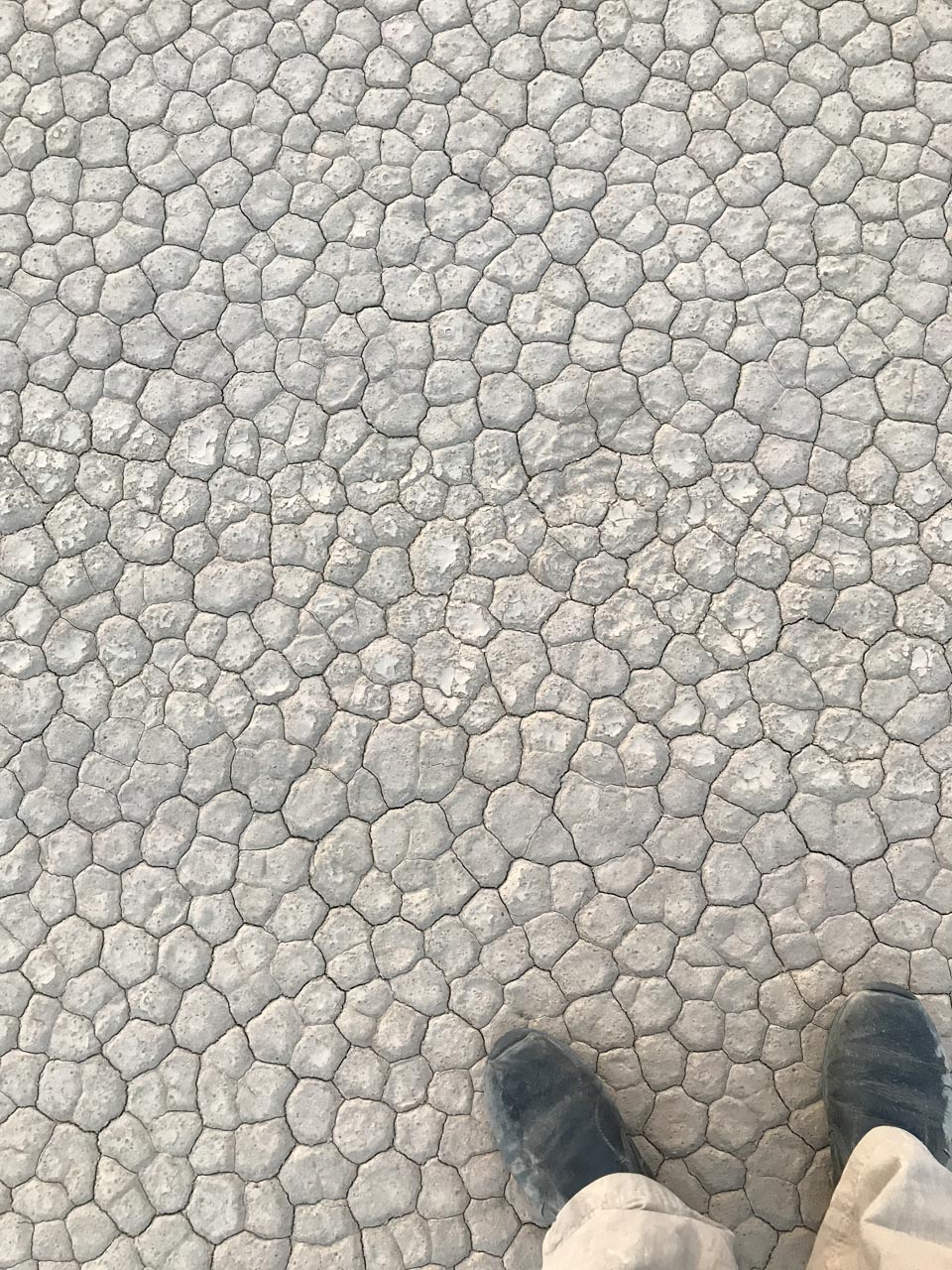Life highlights are those you can list on a single hand. They are indelible events that exceed the normal range of our experience. They may include a first kiss, the birth of a child, recognition of a career accomplishment, or the challenging hike to reach a beautiful mountain pass. This is the story of adding one more of those outlier life experiences to my list.
Years ago, I had read about the geologic mystery of the “sailing stones” on the Racetrack Playa in Death Valley. Death Valley is an intriguing place and not just because of its ominous (and deserved) name. It is a geology and biology classroom, displaying the impacts of volcanoes intruding on sedimentary layers that have been shape-shifted into ribbons of colorful escarpments with water and wind-eroded features. Somehow, the valley has fallen below sea level, and the water, when there is water, dissolves minerals from the mountains and finds its way to the bottom, where it evaporates and leaves the residue behind as a salt flat.
In the spring, the water also nourishes an intense flowering of desert plants, desperate to reproduce. For a few brief weeks, colorful plants and flowers adorn the roadsides and cover the otherwise barren hills. I have been to Death Valley during this season, during a “superbloom” following an unusually wet winter. It was a stunning display of flowers in this otherwise arid and nonviable setting, something I had never expected to see. As impressive as this floral show was, I had really hoped to visit the famous sailing stones on the playa.

Racetrack Playa is an ancient, dry lakebed in Death Valley. It is a vast expanse, miles by miles, of dried mud cracks. It is flat and nearly level, the north end merely inches higher than the south. The occasional stone can be found on the playa, delivered by erosion forces on the surrounding mountains, falling down and rolling out onto the lakebed. They are stones, not boulders, maybe a foot or two across, heavier than is convenient to carry away, but not heavy enough to protect them from magic seekers.
And the magic they seek is that many of the stones are found at the end of a long, physically engraved trail, recording their traversal of the ancient seabed. How could these stones have moved across the dry playa? It has been a mystery to geologists for years. Various theories have been proposed, and some have been tested, but it is a difficult research project. The stones lie inert for years, and then, when next inspected, they have moved. With new trails marking their path! This is the magic that the stone thieves are after.
I wasn’t interested in the stones themselves, but rather in their use as an in-situ foreground prop while photographing the night sky. I wanted to make a time lapse movie capturing star trails as the Earth moved under the sky above the static rocks. But first I had to get there with my gear. The Racetrack is at the end of 30 miles of rough road, a road famous for puncturing tires. I had tried once before, but even at low speed, the ruts, rocks, and washboard were too hard on my passenger and the mission had been aborted.
This time, I was better prepared. I acquired a full-sized spare wheel for an SUV with higher road clearance. My intrepid partner Poldi had assembled an overnight pack with bedrolls and sandwiches. And water, gallons and gallons of it. The forecast was for Death Valley hot, with no cloud cover to break the continuous solar flux. Good for stargazing, but not so good for an afternoon picnic in the desert.
We departed in the morning from our base camp at Mesquite Springs, a few miles from Ubehebe Crater, where the Racetrack Road begins. Ubehebe is a geologically recent volcano that contributed the lava beds from which the early miles of the road are carved. The road does not really support a cruising speed, even a low one– it is more a matter of carefully navigating the least damaging path along it. It takes hours to do so.
Along the way we saw the terrain transform from the dark barren lava fields to lighter desert sand and dirt supporting forests of Joshua Trees, then to dry rocky creek beds cutting through sedimentary formations. At about the 20-mile mark, we encountered what can only be described as “comic relief” from the sheer focus of driving. A branch from the route, where an equally rough road splits off, heads towards some other amazing Death Valley feature. This is “Teakettle Junction”, marked by a wooden frame on which a hundred or more tea kettles have been suspended. Most are marked with encouraging sentiments from their donors.

After a few more miles, we finally approached the near-white flat Racetrack Playa. It contains a black rock outcropping, an island known as “The Grandstand”, presumably where spectators can assemble to watch the races. In fact, the setting has a strong similarity to the Star Wars pod race scene on Tatooine.

It was nearly noon, the temperature had risen considerably, but the novelty of the landscape drew us to explore it. We left our car at the designated parking area for the Grandstand, a wide spot in the gravel road, and walked out onto the strange surface of the ancient lake bottom. It was hard, the surface was dusty, but the mud cracks were fossilized in place and were unaffected by the Vibram soles of our hiking boots. Yet we saw evidence of contemporary damage: cars had breached protective barriers and left doughnut track tire signatures of hot-rodders on the otherwise beautiful and geometrically uniform surface of the playa.

Not fooled by the decoy tiretrack trails, we circled the Grandstand looking for the natural tracks of sailing stones. We did not find them. This was the north end of the playa, and we had heard that the sailing stones were more likely to be found at the south end, several miles away.
Before continuing the quest, we decided to have lunch. We had the ingredients for a picnic, but the intense sun and heat were a problem. We pulled out a tarp and some tentpoles and jury-rigged an awning off the side of the car. The sandwiches were delicious in the shade.

As we put away our picnic, we contemplated the drive to the far end of the playa, wondering if the road would remain navigable. So far, we had stayed mobile, and the car had held its own. We proceeded on.


Pingback: Texas Road Trip: Driving Adventures, Mistakes Made | Thor's Life-Notes
Pingback: Death Valley Days, and Nights | Thor's Life-Notes